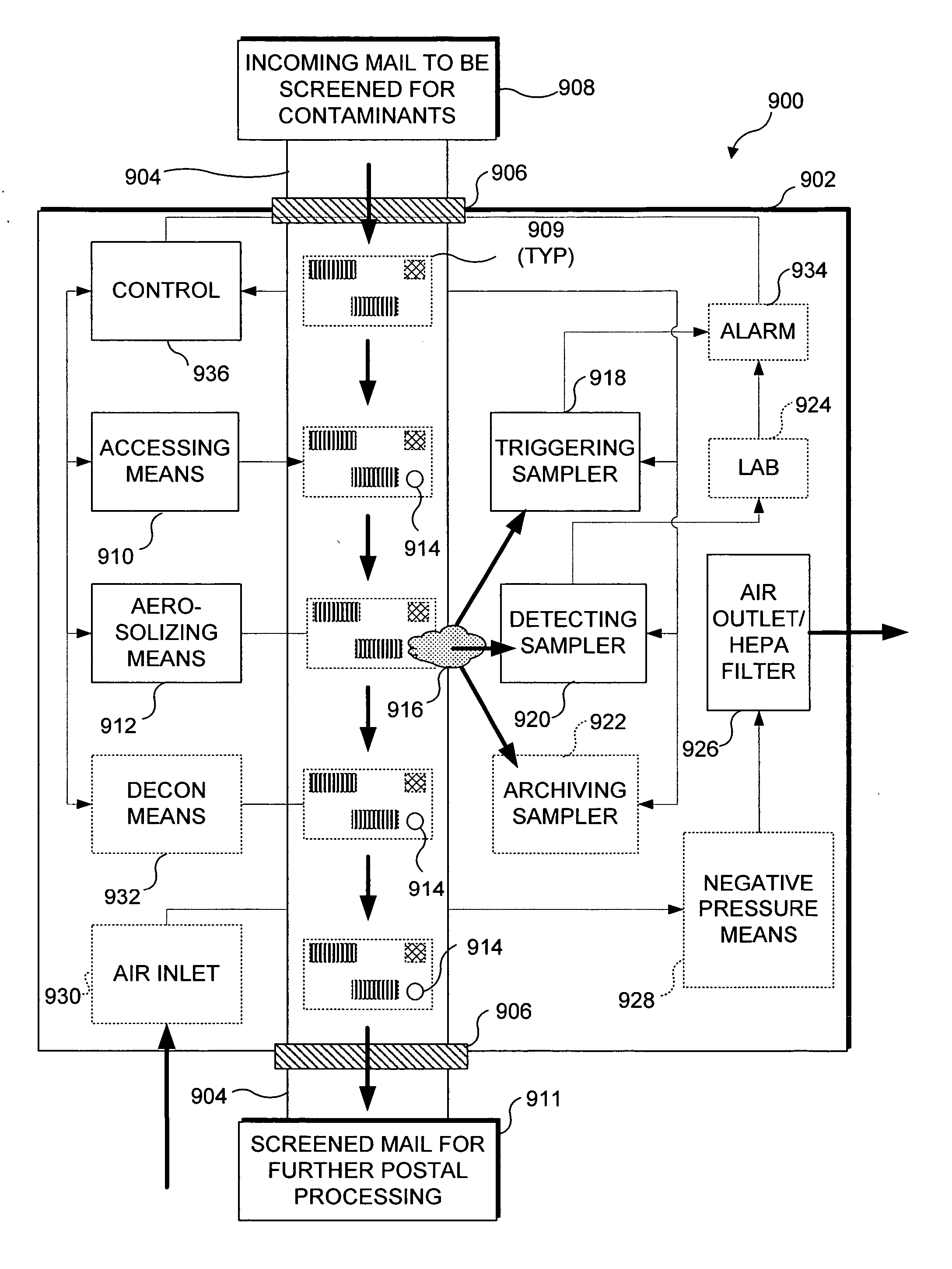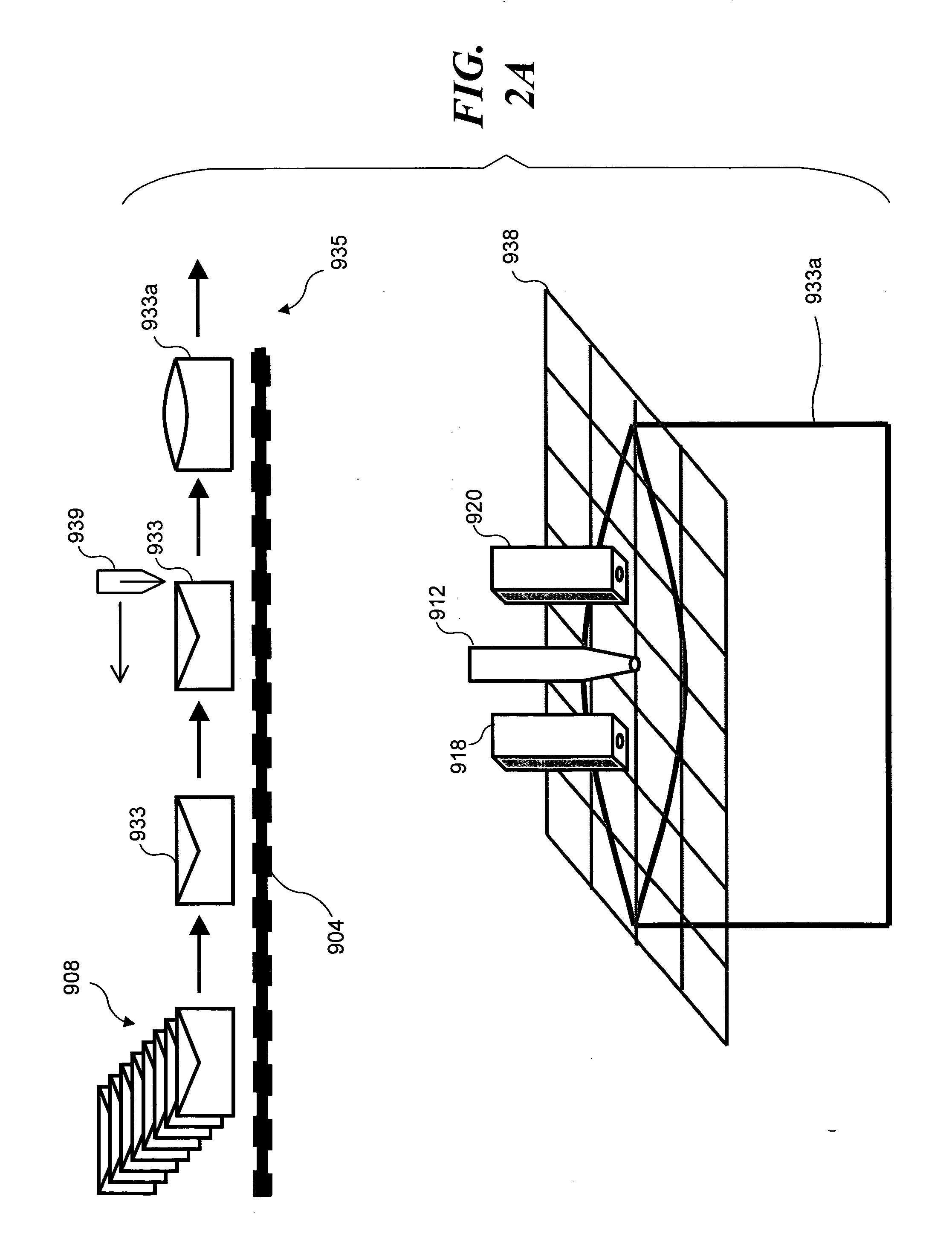Robust system for screening enclosed spaces for biological agents
a biological agent and enclosed space technology, applied in the field of aerosolizing and collecting particles from enclosed spaces, can solve the problems of contaminated mail processing equipment, inability to easily adapt equipment and methods to high-volume mail processing equipment, and inability to screen mail, etc., to achieve the effect of simple and less costly systems, rapid identification of many different compounds, and rapid identification of a variety of biological compounds
- Summary
- Abstract
- Description
- Claims
- Application Information
AI Technical Summary
Benefits of technology
Problems solved by technology
Method used
Image
Examples
Embodiment Construction
Overview
[0084] The present invention relates to a method and apparatus for rapidly analyzing mail, parcels, and containers to determine if such items are contaminated with chemical or biological agents. The present invention can also be used to determine if enclosed volumes, such as rooms, buildings, and vehicles are contaminated with chemical or biological agents. In particular, FIGS. 1, 2A-D, and 37 relate to the present invention in the context of detecting chemical or biological agents associated with containers such as mail or parcels. FIGS. 3-36 and 38 relate to the present invention in the context of detecting chemical or biological agents associated with enclosed volumes in general. Such enclosed volumes can vary widely, ranging from the enclosed volume defined by the housing of mail sorting equipment, to enclosed volumes corresponding to heating, ventilation, and / or air conditioning ducts (as well as buildings, offices, cargo containers, passenger vessels, aircraft, and o...
PUM
| Property | Measurement | Unit |
|---|---|---|
| Pressure | aaaaa | aaaaa |
| Size | aaaaa | aaaaa |
| Volume | aaaaa | aaaaa |
Abstract
Description
Claims
Application Information
 Login to View More
Login to View More - R&D
- Intellectual Property
- Life Sciences
- Materials
- Tech Scout
- Unparalleled Data Quality
- Higher Quality Content
- 60% Fewer Hallucinations
Browse by: Latest US Patents, China's latest patents, Technical Efficacy Thesaurus, Application Domain, Technology Topic, Popular Technical Reports.
© 2025 PatSnap. All rights reserved.Legal|Privacy policy|Modern Slavery Act Transparency Statement|Sitemap|About US| Contact US: help@patsnap.com



